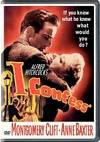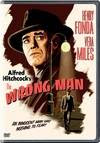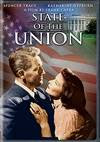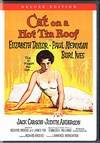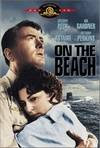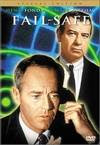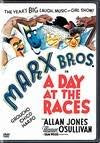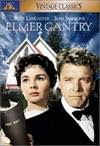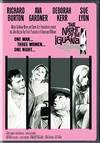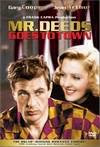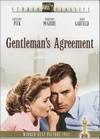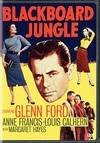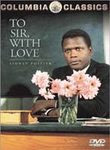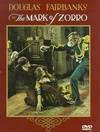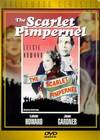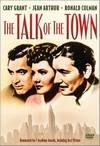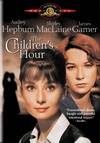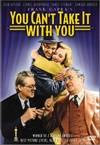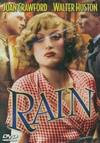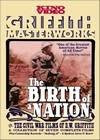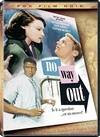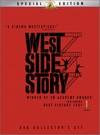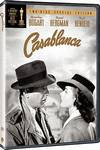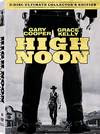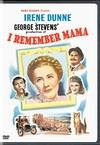I Confess (1953, black & white)
The Wrong Man (1957, black & white)
There’s nothing I like better than finding old movies that I have never seen. Actually, I didn’t find these two movies, they were given to me as a Christmas present from my stepdaughter and her husband ─ two of four movies that were part of a Turner Classic Movies bundling of Alfred Hitchcock thrillers.
My initial elation was because of the stars of the films ─ Montgomery Clift in I Confess and Henry Fonda in The Wrong Man. The main reason I like these two actors is that they both make the most of the understated intensity that they bring to their work. Then there is the Hitchcock factor. He has never made a movie that I didn’t like. But, as always for me, it’s the storylines that make these movies.
Both films are about innocent men who are accused of committing a crime. In I Confess, a priest is tried for a murder he didn’t commit. In The Wrong Man, a case of mistaken identity leads to having a musician charged with a series of robberies that he didn’t commit. As headlines in the past several years show, the reality of innocent men going to prison or facing execution is a familiar story in the American justice system. And while charges against both men are brought on rather flimsy evidence, that is not what I found most interesting about these stories. What did grab me was that although by movies’ end both are exonerated, the lives of their families and friends were negatively impacted in devastating ways.
In I Confess, the priest’s innocent meetings with a married woman who was once his girlfriend becomes the basis of the alleged motive for the killing of a blackmailer. At trial, the prosecution tries to portray these meetings in a most tawdry light ─ the first such meeting happening after the Clift character returns from war, before he learns that she is married and before he joins the priesthood. The woman, played by Anne Baxter, is forced to admit that she still loves the priest ─ an admission that one would expect should cripple her relationship with her husband.
As for the priest, he genuinely appears to have given his life totally to God. But public opinion prefers to believe the worst of the priest even after the jury finds him not guilty because the prosecution failed to place the murder weapon in his hand. But before the priest is finally proven beyond a doubt that he is innocent, the wife of the actual murderer is killed by her husband, who is trying to prevent her from letting his guilt be known. The real killer also kills someone else before a policeman’s bullet ends his life. As for the alleged paramour, when she sees that the priest has been exonerated, she and her husband go home, where we can assume they will work on repairing their marriage.
Financial problems plague the musician in The Wrong Man, which is based on a true story. The musician ─ who has a wife, played by Vera Miles, and two sons ─ walks into an insurance office to find out about taking a loan out on his wife’s policy to pay for some dental work. The insurance rep mistakenly identifies him as a man who robbed the agency a month earlier. The rep’s identification is backed up by the woman who had originally faced the robber, leading to the musician being taken into custody for questioning. Then, an error on a writing sample adds fuel to the fire and after being identified by the two women again ─ this time in a lineup ─ the musician is arrested.
Although the musician cannot make bail, his brother-in-law can and does. They hire a lawyer who they are afraid they can’t afford and begin to search for witnesses that will prove he was elsewhere at the time of the crimes. Unfortunately, two of the witnesses have died and they are having trouble finding the third one. I need to note here that the Miles character had been chastising herself for being a bad wife who has been unable to handle the family’s finances. Then when finding the witnesses become a problem, the wife blames herself for her husband’s arrest and shuts down emotionally and becomes unable to handle her normal responsibilities. She is taken to a psychiatric institution, where you get the feeling that she is glad to no longer be a burden on her family.
Eventually, the real perpetrator is caught ─ identified by the two women who were so sure the musician was the thief. Now, no longer under the cloud of prosecution and confinement, the musician goes to give his wife the good news. But her depression is inconsolable and it takes two years before she is able to rejoin her family.
The collateral damage done to the families and friends of these two innocent men, as well as to innocent bystanders, are an unfortunate part of our criminal justice system ─ and other that more diligent police work, I’m not sure what can be done about it.
What I can do, however, is recommend that you take a look at these two fine films.
Wednesday, February 10, 2010
Tuesday, February 9, 2010
The Exploitation of Aliens
Avatar (2009, color, 3D, IMAX)
District 9 (2009, black & white)
I stray from my usual obsession with vintage movies to discuss two films that have created quite a buzz last year, a buzz that continues into the new decade for a pair of Oscar’s Best Picture nominees. And a buzz on which I feel compelled add my two cents.
To begin with, the two movies couldn’t be farther apart graphically. Visually, Avatar is a stunning beautifully, vividly colorful story that feels like a moving 3-D mural, while District 9 is a photographically gritty, old-school black-and-white offering that intentionally adopts a documentary format. But their graphic differences are not where I want to spend my two cents, except to say that they both are fascinating and thoroughly enjoyable cinematic efforts. I’m much more interested in investing my Lincoln coins in a subject of the interpretations of their plots.
Thematically, these two movies have somewhat similar storylines ─ the human exploitation of being from other planets. In Avatar, the humans go to another planet to create their greed-inspired mischief, while in District 9, the aliens come to Earth and are exploited by humans trying to learn how to use the visitors’ bio-mechanic weaponry. The concept of showing the human race in such a predatory portrayal has upset many people, quite a few of whom have denounced the movies ─ especially Avatar. And from what I’ve seen, these denouncers are almost exclusively members of the culturally dominant segment of our society. Also, the idea that these movies could be meant to be allegories about race relations has upset other groups of people. For instance, some black folks are upset that the good guy in Avatar who leads the alien civilization in revolt is Caucasian and say the movie is an attempt to assuage white guilt. And because District 9, although made in South Africa, is said to be an allegory about illegal immigration is the United States, I suspect that more than a few Latinos are upset by being portrayed as disgusting-looking shrimp-like beings euphemistically called “prawns” by the humans in the movie.
If ever two movies were ripe for dissection, these are them. While I do believe that these films are attempting to make political ─ and in the case of Avatar, environmental ─ points, some of this fuss I just find too self-serving. For instance, as my daughter points out, the blue creatures of Avatar could be looked upon more as Native Americans than African Americans. And although I agree with her analogy, I also think that the blue humanoids could be looked upon as Africans, as opposed to African Americans. However, this is a useless argument as far as I’m concerned. For me, the movie is about exploitation, regardless of the color of the people being exploited.
Which brings me to the exploiters in these two movies: In Avatar, my daughter sees Halliburton as the root of the evil. While I can agree with that, in this movie I tend to see the companies that made their fortunes on the backs and property of native people that were exploited during the colonial period of world history ─ like the Dutch East India Company purchasing Manhattan Island for $24 in trinkets. But that’s a generational difference of perception. As for District 9, my younger son and I agree that the exploiter is the military industrial complex that is ever-seeking a more efficient way of killing.
As for the claim that Avatar offers a way for white Americans to assuage their guilt over their historical treatment of peoples of color: I suppose this could be true, but I think this is another useless argument. While the bad guys in both movies are led by whites, black bad guys abound in both stories. Also, while once the only depiction of black people in movies that were distributed to general audiences were shiftless, lazy, big-eyed, inane caricatures, that is not longer the case. Now, there are just as many white fools in movies as there are black ones ─ and, more importantly, there are many, many more instances of black heroes on the big screen than ever. So if you’re looking for a way to show how whites assuage their guilt, you could just as easily look at how many of them enjoy movies where a black person saves the day.
I discussed the Avatar observations with my older son, my daughter and her husband. I discussed the District 9 themes with my younger son. They immediately dismissed a lot of the brouhaha as bull doodoo ─ and I have to say that I agree with them. They didn’t want to hear about who did what to whom back in the day. They know race relations aren’t perfect, but the world they see is one that is trying to get beyond the lingering garbage, a clean world where race hatred eventually becomes a thing of the far-distant past. Are they being naïve? Maybe. Are they being unrealistic? Again, maybe. Are they being overly optimistic? Certainly not. Should they fear the racist attitudes and actions that still occur ─ or for that matter, the religious fanatics of all stripes who would do them harm? No, never! I’ve tried to teach my children not to fear racial animosity or violence ─ to accept that it occurs and try to not let it turn them into whimpering victims. Life is too short and too sweet to be looking over your shoulder afraid of the person walking behind you. Most times, that person has too many other things on his or her own mind to be concerned about you. So my children’s reaction to my discussion was most heartening.
And speaking of religion, apparently the head of the Catholic Church has condemned Avatar because the aliens worship nature rather than God. This is an argument I don't understand. It seems to me that since God created nature, when you worship nature you are singing the praises of God's generous creation that sustains all of us. So in fact, you are worshiping God.
But back to the exploitation: We should all remember that although the United States was founded as an imperfect union where exploitation was rampant, many people of color overlooked that flaw and contributed to making this country great ─ people like Crispus Atticks, Phoebe Frances, Sacagawea, Frederick Douglas, George Washington Carver, W.E.B. DuBois, Rosa Parks and Dr. Martin Luther King, to name just a few. Racial barriers are coming down every day ─ as evidenced by our current President, Barack Obama, and the growing number of interracial couples showing up in movies, on television, in the streets and in our families. (In case you haven’t noticed by my picture, I’m black. My mother’s father was a Native American. My children’s mother is of Chinese descent. My White French wife’s daughters’ father was born in Puerto Rico. And my son-in-law is of Irish descent.) Has the United States cleansed itself of prejudice and bigotry? Of course not, and it won’t until all forms of prejudice and bigotry are eliminated from the hearts and souls of every single citizen of the United States. And then maybe exploitation ─ which often happens when people take advantage of those of their own race or ethnicity as well as when one racial or ethnic group takes advantage of another ─ will cease to be.
One final observation about the movies: The main character in both films ends up acquiring the racial makeup of the oppressed. But then, there is another difference here. In Avatar, the hero gladly accepts his new circumstances. In District 9, the “hero” longs to return to his original self.
Look, whatever a person gleans from a movie, a book or any story largely depends on what was ingrained in that person by his or her parents, relatives and other influential people in their lives, as well as that person’s life experiences. There’s just no way around this. So while it’s always tempting to place a value judgment on these things ─ and Lord knows, I do it all the time; just look at my previous and future blogs ─ sometimes it’s useful to ignore that something that you think is aimed right at your very being and just sit back and enjoy the movie. After all, it’s entertainment. Let it entertain you.
District 9 (2009, black & white)
I stray from my usual obsession with vintage movies to discuss two films that have created quite a buzz last year, a buzz that continues into the new decade for a pair of Oscar’s Best Picture nominees. And a buzz on which I feel compelled add my two cents.
To begin with, the two movies couldn’t be farther apart graphically. Visually, Avatar is a stunning beautifully, vividly colorful story that feels like a moving 3-D mural, while District 9 is a photographically gritty, old-school black-and-white offering that intentionally adopts a documentary format. But their graphic differences are not where I want to spend my two cents, except to say that they both are fascinating and thoroughly enjoyable cinematic efforts. I’m much more interested in investing my Lincoln coins in a subject of the interpretations of their plots.
Thematically, these two movies have somewhat similar storylines ─ the human exploitation of being from other planets. In Avatar, the humans go to another planet to create their greed-inspired mischief, while in District 9, the aliens come to Earth and are exploited by humans trying to learn how to use the visitors’ bio-mechanic weaponry. The concept of showing the human race in such a predatory portrayal has upset many people, quite a few of whom have denounced the movies ─ especially Avatar. And from what I’ve seen, these denouncers are almost exclusively members of the culturally dominant segment of our society. Also, the idea that these movies could be meant to be allegories about race relations has upset other groups of people. For instance, some black folks are upset that the good guy in Avatar who leads the alien civilization in revolt is Caucasian and say the movie is an attempt to assuage white guilt. And because District 9, although made in South Africa, is said to be an allegory about illegal immigration is the United States, I suspect that more than a few Latinos are upset by being portrayed as disgusting-looking shrimp-like beings euphemistically called “prawns” by the humans in the movie.
If ever two movies were ripe for dissection, these are them. While I do believe that these films are attempting to make political ─ and in the case of Avatar, environmental ─ points, some of this fuss I just find too self-serving. For instance, as my daughter points out, the blue creatures of Avatar could be looked upon more as Native Americans than African Americans. And although I agree with her analogy, I also think that the blue humanoids could be looked upon as Africans, as opposed to African Americans. However, this is a useless argument as far as I’m concerned. For me, the movie is about exploitation, regardless of the color of the people being exploited.
Which brings me to the exploiters in these two movies: In Avatar, my daughter sees Halliburton as the root of the evil. While I can agree with that, in this movie I tend to see the companies that made their fortunes on the backs and property of native people that were exploited during the colonial period of world history ─ like the Dutch East India Company purchasing Manhattan Island for $24 in trinkets. But that’s a generational difference of perception. As for District 9, my younger son and I agree that the exploiter is the military industrial complex that is ever-seeking a more efficient way of killing.
As for the claim that Avatar offers a way for white Americans to assuage their guilt over their historical treatment of peoples of color: I suppose this could be true, but I think this is another useless argument. While the bad guys in both movies are led by whites, black bad guys abound in both stories. Also, while once the only depiction of black people in movies that were distributed to general audiences were shiftless, lazy, big-eyed, inane caricatures, that is not longer the case. Now, there are just as many white fools in movies as there are black ones ─ and, more importantly, there are many, many more instances of black heroes on the big screen than ever. So if you’re looking for a way to show how whites assuage their guilt, you could just as easily look at how many of them enjoy movies where a black person saves the day.
I discussed the Avatar observations with my older son, my daughter and her husband. I discussed the District 9 themes with my younger son. They immediately dismissed a lot of the brouhaha as bull doodoo ─ and I have to say that I agree with them. They didn’t want to hear about who did what to whom back in the day. They know race relations aren’t perfect, but the world they see is one that is trying to get beyond the lingering garbage, a clean world where race hatred eventually becomes a thing of the far-distant past. Are they being naïve? Maybe. Are they being unrealistic? Again, maybe. Are they being overly optimistic? Certainly not. Should they fear the racist attitudes and actions that still occur ─ or for that matter, the religious fanatics of all stripes who would do them harm? No, never! I’ve tried to teach my children not to fear racial animosity or violence ─ to accept that it occurs and try to not let it turn them into whimpering victims. Life is too short and too sweet to be looking over your shoulder afraid of the person walking behind you. Most times, that person has too many other things on his or her own mind to be concerned about you. So my children’s reaction to my discussion was most heartening.
And speaking of religion, apparently the head of the Catholic Church has condemned Avatar because the aliens worship nature rather than God. This is an argument I don't understand. It seems to me that since God created nature, when you worship nature you are singing the praises of God's generous creation that sustains all of us. So in fact, you are worshiping God.
But back to the exploitation: We should all remember that although the United States was founded as an imperfect union where exploitation was rampant, many people of color overlooked that flaw and contributed to making this country great ─ people like Crispus Atticks, Phoebe Frances, Sacagawea, Frederick Douglas, George Washington Carver, W.E.B. DuBois, Rosa Parks and Dr. Martin Luther King, to name just a few. Racial barriers are coming down every day ─ as evidenced by our current President, Barack Obama, and the growing number of interracial couples showing up in movies, on television, in the streets and in our families. (In case you haven’t noticed by my picture, I’m black. My mother’s father was a Native American. My children’s mother is of Chinese descent. My White French wife’s daughters’ father was born in Puerto Rico. And my son-in-law is of Irish descent.) Has the United States cleansed itself of prejudice and bigotry? Of course not, and it won’t until all forms of prejudice and bigotry are eliminated from the hearts and souls of every single citizen of the United States. And then maybe exploitation ─ which often happens when people take advantage of those of their own race or ethnicity as well as when one racial or ethnic group takes advantage of another ─ will cease to be.
One final observation about the movies: The main character in both films ends up acquiring the racial makeup of the oppressed. But then, there is another difference here. In Avatar, the hero gladly accepts his new circumstances. In District 9, the “hero” longs to return to his original self.
Look, whatever a person gleans from a movie, a book or any story largely depends on what was ingrained in that person by his or her parents, relatives and other influential people in their lives, as well as that person’s life experiences. There’s just no way around this. So while it’s always tempting to place a value judgment on these things ─ and Lord knows, I do it all the time; just look at my previous and future blogs ─ sometimes it’s useful to ignore that something that you think is aimed right at your very being and just sit back and enjoy the movie. After all, it’s entertainment. Let it entertain you.
Tuesday, December 22, 2009
The Political Minefield
State of the Union (1948, black & white)
After a long and somewhat unjustified hiatus, which I won’t waste your time with here, I’m back. And I’m going to change my format a bit. Instead of writing about three movies at a time, I’m whittling that down to just one. And, I will no longer ignore the cast members of these films. My reasons for the change will, hopefully, be obvious by my choice of the movie that was chosen for my return ─ State of the Union.
Let me begin by saying that the current political discourse in this country is extremely troubling to me and, I’m sure, many other Americans. The us-versus-them mentality that dominates our politics is childish, embarrassing and ─ more important ─ ultimately self destructive. And it occurs for one reason: to elect people who will promote laws that only reflect one set of beliefs and restrict laws that reflect all other beliefs. This equation too often ignores promoting laws that are for the good of the country as a whole ─ although politicians of all stripes will claim that is what they are doing. But I have to question, for instance, why is it that when some politicians call universal health care an entitlement program, they make it sound like it is evil to believe that health care is something to which all people should be entitled? But I fear I may be getting too far afield.
State of the Union, which has a star-studded cast that gives exceptional performances, is about the short-lived political career of self-made business magnate ─ and apparent philanderer ─ Grant Matthews [played by Spencer Tracy]. The other woman, Kay Thorndyke [Angela Lansbury], runs a newspaper empire and aspires to be America’s king maker and Grant Matthews is her would-be king. But the wild card in the deck is Grant’s wife, Mary [Katherine Hepburn], who is aware of the philandering but believes her husband still loves her and is waiting for him to come to that realization. (This movie parallels today’s American politics is oh so many ways.)
The initial political overtures to Grant are made at the office of a political advisor named Jim Conover [Adolphe Menjou], who uses his Washington home as a boarding house for visiting politicians and citizens of note. The meeting is also attended by Kay Thorndyke and one of her political reporters, the wise-cracking Spike MacManus [Van Johnson]. But Grant is skeptical. He is not sure that politics is for him. He doesn’t particularly trust politicians and dislikes the way they run things. He is told that he could change that once he is in office. He worries that he would be forced to say and do things that he doesn’t believe in, and he warns them that he would speak his own mind without interference from others. He is told that he will be able to be his own man.
Then the subject of Grant’s relationship to Kay arises ─ after all, a presidential candidate should be beyond reproach. They agree not to see each other and Grant then calls Mary to ask her if she would join him on a speaking tour he had already scheduled in cities where he had business interests. Mary would not be told of the political side until she arrived in Washington. Grant makes it clear that he would not run without Mary’s support.
In the next scene, which is my favorite in this movie except for the climax, Grant stops in front of the White House as he considers the proposition. A man approaches and asks him what he thinks of it, to which Grant replies, “It needs a coat of paint.” The man is incredulous and questions Grant about what he thinks about the people who have lived there and what the White House represents. Grant then goes on for what seemed like ten minutes (I know it was shorter, it just seem that long.) naming all the people who made the White House what it is. Included in those names are people from all over the world ─ philosophers, religious leaders, scientists, writers, painters, sculptures, explorers and, of course, American presidents and others who have fought for liberty in this country and elsewhere. The most interesting of this final group was a name that I hadn’t heard during the previous times I had seen this movie, a name I’m sure few people have ever heard of at all, and a name that made me marvel at the fact that someone from that period of American history would think to include it in this scene. That name is Crispus Atticks, the first man who died fighting for America’s independence. The inclusion of the name of this black man reinforced something that I had noticed during my earlier viewings of this movie: In this scene, Grant Matthews seems to be implying that although the United States (as symbolized by the White House) is a wonderful thing to behold, it still needs some sprucing up (like a fresh coat of paint) that would make it a better place in which to live.
When Mary arrives at Conover’s house, she is told by her host of the possibility of Grant embarking on a campaign for the presidency. She thinks it’s a wonderful idea and the two (Mary and Grant) seem to be getting along just fine until Mary finds Kay’s glasses on Grant’s night table. Kay had gone out of her way to covertly place them there so that Mary would find them. While this creates some friction (Grant winds up sleeping on the floor), it does not derail the campaign. And as Mary and Grant discuss their relationship, Grant tells her, truthfully, that he doesn’t know how Kay’s glasses would up in his room. When the conversation ends, Mary, who anyone can plainly see loves her husband, comes to believe that their marriage is still salvageable.
On the campaign trail, the couple seems to grow closer and Grant is making a big hit with his speeches. Conover, in the meantime, is meeting in smoke-filled rooms with political operatives plotting strategy and promising political payoffs for their support. Grant’s next to last speech on the tour, however, raises a red flag for Conover and Kay. Instead of pandering to the labor crowd to which he was speaking, he apparently told them that they need to do more to get along with management and to stop being so combative. This has apparently displeased the labor leaders, although the rank and file union members seem to approve of the tone of the speech. And knowing Grant, Conover and Kay worry that in his next speech to business leaders Grant will alienate them as well by telling them they also have to clean up their act.
Another interesting point about this movie: There is a scene when Mary and Grant are discussing politics with a waiter. The waiter tells them that his wife says the country would be better off with a woman as president. Both Grant and Mary laugh about it and ask why the waiter’s wife feels that way. The waiter tells them that men are like roosters who always fight and accomplish little. Women, on the other hand, are like hens ─ not nearly as aggressive, with more of a tendency to try to get along, and they’re the ones who produce the eggs. Interesting analogy, huh?
I have to admit that although I have never been surprised that Katherine Hepburn would accept a role where her character would be tolerant of a husband’s infidelity ─ after all, in real life she was the other woman in Spencer Tracy’s marriage ─ but the idea that she would pooh-pooh the notion that a woman could be president of the United States seems to go against her feminist grain. Maybe I’m reading too much into this, considering that the movie takes place in 1948 and the feminist movement didn’t come to full bloom until the 1960s.
Anyway, MacManus, now Grant’s campaign manager, and Conover try to get Grant to deliver a speech to the business community that has been written for him. But Grant, with Mary’s encouragement, refuses. They produce letters and telegrams from “the people” that praised Grant’s speeches. Conover tells them to forget about the little guys because they aren’t the ones who deliver the delegates at the state and national conventions that nominate the candidates. But Grant remains steadfast ─ that is until he is called into a closed-door meeting without Mary and with Kay, who convinces him to follow Conover’s advice. After the speech, letters and telegrams of support pour in from people pledging money and delegates and Grant sees the logic to Conover’s strategy.
Mary, however, becomes unhappy with the new tack Grant has taken. Earlier in the movie, she had warned Conover that playing the traditional political game would figuratively kill the real Grant and turn him into something that he would come to despise. Now she is watching that happen. And on top of that, MacManus tells Mary the plans that have been made for a radio and TV address to announce Grant’s candidacy for president of the United States have to include a photo op of Mary, Grant and Kay together. The reason: to dispel any doubt that there is anything untoward going on between her husband and the media czarina. Mary reluctantly agrees.
On the night of the big shebang, after everything has been set up and the speakers have begun addressing the nation, Mary learns of Grant’s meeting with Kay ─ the meeting after which he changed strategy. Then she hears Conover and Kay wrangling with the political operatives over the deals that have been made in her husband’s name. Disgusted, she sends her children, who were both supposed say something on air about their father, to bed. Then, she refuses to give the speech introducing her husband. When Grant learns about Mary’s change, he, Conover and Kay plot a damage-control strategy, with Kay introducing Grant. But MacManus, who has grown fond of Grant and Mary, talks her into giving the speech.
When Mary steps to the microphone and begins to talk, Conover and Kay are elated, but Grant is furious. He realizes that Mary is going against her own conscience to help him out ─ and while he allowed himself to sell his soul to the devil for the chance of fame and glory, he knew he could not allow the woman he loved to do the same. He took the microphone away from Mary and confessed his sins ─ the back-room deals, the insincerity of his speeches, his greed for political power. Then, after telling his audience that he didn’t deserve to be president, he told them what he really believed ─ that all the nation’s citizens should be entitled to whatever medical treatment was necessary to sustain their good health, that we should be willing to share our good fortune with our neighbors and the rest of the world, that we should embrace the idea of a global government, that we should not let fear divide us and keep us from being the kind of nation that we can be.
It is powerful stuff ─ and it is a movie that should be required viewing for all politicians and everyone who considers a career in politics.
After a long and somewhat unjustified hiatus, which I won’t waste your time with here, I’m back. And I’m going to change my format a bit. Instead of writing about three movies at a time, I’m whittling that down to just one. And, I will no longer ignore the cast members of these films. My reasons for the change will, hopefully, be obvious by my choice of the movie that was chosen for my return ─ State of the Union.
Let me begin by saying that the current political discourse in this country is extremely troubling to me and, I’m sure, many other Americans. The us-versus-them mentality that dominates our politics is childish, embarrassing and ─ more important ─ ultimately self destructive. And it occurs for one reason: to elect people who will promote laws that only reflect one set of beliefs and restrict laws that reflect all other beliefs. This equation too often ignores promoting laws that are for the good of the country as a whole ─ although politicians of all stripes will claim that is what they are doing. But I have to question, for instance, why is it that when some politicians call universal health care an entitlement program, they make it sound like it is evil to believe that health care is something to which all people should be entitled? But I fear I may be getting too far afield.
State of the Union, which has a star-studded cast that gives exceptional performances, is about the short-lived political career of self-made business magnate ─ and apparent philanderer ─ Grant Matthews [played by Spencer Tracy]. The other woman, Kay Thorndyke [Angela Lansbury], runs a newspaper empire and aspires to be America’s king maker and Grant Matthews is her would-be king. But the wild card in the deck is Grant’s wife, Mary [Katherine Hepburn], who is aware of the philandering but believes her husband still loves her and is waiting for him to come to that realization. (This movie parallels today’s American politics is oh so many ways.)
The initial political overtures to Grant are made at the office of a political advisor named Jim Conover [Adolphe Menjou], who uses his Washington home as a boarding house for visiting politicians and citizens of note. The meeting is also attended by Kay Thorndyke and one of her political reporters, the wise-cracking Spike MacManus [Van Johnson]. But Grant is skeptical. He is not sure that politics is for him. He doesn’t particularly trust politicians and dislikes the way they run things. He is told that he could change that once he is in office. He worries that he would be forced to say and do things that he doesn’t believe in, and he warns them that he would speak his own mind without interference from others. He is told that he will be able to be his own man.
Then the subject of Grant’s relationship to Kay arises ─ after all, a presidential candidate should be beyond reproach. They agree not to see each other and Grant then calls Mary to ask her if she would join him on a speaking tour he had already scheduled in cities where he had business interests. Mary would not be told of the political side until she arrived in Washington. Grant makes it clear that he would not run without Mary’s support.
In the next scene, which is my favorite in this movie except for the climax, Grant stops in front of the White House as he considers the proposition. A man approaches and asks him what he thinks of it, to which Grant replies, “It needs a coat of paint.” The man is incredulous and questions Grant about what he thinks about the people who have lived there and what the White House represents. Grant then goes on for what seemed like ten minutes (I know it was shorter, it just seem that long.) naming all the people who made the White House what it is. Included in those names are people from all over the world ─ philosophers, religious leaders, scientists, writers, painters, sculptures, explorers and, of course, American presidents and others who have fought for liberty in this country and elsewhere. The most interesting of this final group was a name that I hadn’t heard during the previous times I had seen this movie, a name I’m sure few people have ever heard of at all, and a name that made me marvel at the fact that someone from that period of American history would think to include it in this scene. That name is Crispus Atticks, the first man who died fighting for America’s independence. The inclusion of the name of this black man reinforced something that I had noticed during my earlier viewings of this movie: In this scene, Grant Matthews seems to be implying that although the United States (as symbolized by the White House) is a wonderful thing to behold, it still needs some sprucing up (like a fresh coat of paint) that would make it a better place in which to live.
When Mary arrives at Conover’s house, she is told by her host of the possibility of Grant embarking on a campaign for the presidency. She thinks it’s a wonderful idea and the two (Mary and Grant) seem to be getting along just fine until Mary finds Kay’s glasses on Grant’s night table. Kay had gone out of her way to covertly place them there so that Mary would find them. While this creates some friction (Grant winds up sleeping on the floor), it does not derail the campaign. And as Mary and Grant discuss their relationship, Grant tells her, truthfully, that he doesn’t know how Kay’s glasses would up in his room. When the conversation ends, Mary, who anyone can plainly see loves her husband, comes to believe that their marriage is still salvageable.
On the campaign trail, the couple seems to grow closer and Grant is making a big hit with his speeches. Conover, in the meantime, is meeting in smoke-filled rooms with political operatives plotting strategy and promising political payoffs for their support. Grant’s next to last speech on the tour, however, raises a red flag for Conover and Kay. Instead of pandering to the labor crowd to which he was speaking, he apparently told them that they need to do more to get along with management and to stop being so combative. This has apparently displeased the labor leaders, although the rank and file union members seem to approve of the tone of the speech. And knowing Grant, Conover and Kay worry that in his next speech to business leaders Grant will alienate them as well by telling them they also have to clean up their act.
Another interesting point about this movie: There is a scene when Mary and Grant are discussing politics with a waiter. The waiter tells them that his wife says the country would be better off with a woman as president. Both Grant and Mary laugh about it and ask why the waiter’s wife feels that way. The waiter tells them that men are like roosters who always fight and accomplish little. Women, on the other hand, are like hens ─ not nearly as aggressive, with more of a tendency to try to get along, and they’re the ones who produce the eggs. Interesting analogy, huh?
I have to admit that although I have never been surprised that Katherine Hepburn would accept a role where her character would be tolerant of a husband’s infidelity ─ after all, in real life she was the other woman in Spencer Tracy’s marriage ─ but the idea that she would pooh-pooh the notion that a woman could be president of the United States seems to go against her feminist grain. Maybe I’m reading too much into this, considering that the movie takes place in 1948 and the feminist movement didn’t come to full bloom until the 1960s.
Anyway, MacManus, now Grant’s campaign manager, and Conover try to get Grant to deliver a speech to the business community that has been written for him. But Grant, with Mary’s encouragement, refuses. They produce letters and telegrams from “the people” that praised Grant’s speeches. Conover tells them to forget about the little guys because they aren’t the ones who deliver the delegates at the state and national conventions that nominate the candidates. But Grant remains steadfast ─ that is until he is called into a closed-door meeting without Mary and with Kay, who convinces him to follow Conover’s advice. After the speech, letters and telegrams of support pour in from people pledging money and delegates and Grant sees the logic to Conover’s strategy.
Mary, however, becomes unhappy with the new tack Grant has taken. Earlier in the movie, she had warned Conover that playing the traditional political game would figuratively kill the real Grant and turn him into something that he would come to despise. Now she is watching that happen. And on top of that, MacManus tells Mary the plans that have been made for a radio and TV address to announce Grant’s candidacy for president of the United States have to include a photo op of Mary, Grant and Kay together. The reason: to dispel any doubt that there is anything untoward going on between her husband and the media czarina. Mary reluctantly agrees.
On the night of the big shebang, after everything has been set up and the speakers have begun addressing the nation, Mary learns of Grant’s meeting with Kay ─ the meeting after which he changed strategy. Then she hears Conover and Kay wrangling with the political operatives over the deals that have been made in her husband’s name. Disgusted, she sends her children, who were both supposed say something on air about their father, to bed. Then, she refuses to give the speech introducing her husband. When Grant learns about Mary’s change, he, Conover and Kay plot a damage-control strategy, with Kay introducing Grant. But MacManus, who has grown fond of Grant and Mary, talks her into giving the speech.
When Mary steps to the microphone and begins to talk, Conover and Kay are elated, but Grant is furious. He realizes that Mary is going against her own conscience to help him out ─ and while he allowed himself to sell his soul to the devil for the chance of fame and glory, he knew he could not allow the woman he loved to do the same. He took the microphone away from Mary and confessed his sins ─ the back-room deals, the insincerity of his speeches, his greed for political power. Then, after telling his audience that he didn’t deserve to be president, he told them what he really believed ─ that all the nation’s citizens should be entitled to whatever medical treatment was necessary to sustain their good health, that we should be willing to share our good fortune with our neighbors and the rest of the world, that we should embrace the idea of a global government, that we should not let fear divide us and keep us from being the kind of nation that we can be.
It is powerful stuff ─ and it is a movie that should be required viewing for all politicians and everyone who considers a career in politics.
Sunday, July 12, 2009
Love: The Gift Money Can't Buy
Citizen Kane
The Baron of Arizona
Cat on a Hot Tin Roof
Love: The condition of the heart that can bring so much joy and so much misery. And with all the people who misuse the word, you’d think that somewhere there would be a school or a teacher that can show us not only what the word really means, but also how to bring it into our lives. Well, actually, there are people who can show us how to attain – and maintain – it. Those people are our parents. Unfortunately, many of our parents never learned the lessons themselves – and what those badly educated parents taught us often falls woefully short of our expectations.
It is all too obvious that the result of some of their teachings have focused on hate – usually of themselves – and the lessons that were learned caused their students to do mean, violent and often deadly things. But that is not what I wish to talk about here. Rather, I would like to discuss how the good intentions of parents who love their children can fail to produce the desired result – the happiness and sense of fulfillment that love gives life. The movies selected for this posting are Citizen Kane, released in 1941 in black and white; The Baron of Arizona, 1950 in b&w; and Cat on a Hot Tin Roof, 1958 in color.
Charles Foster Kane, the title character in Citizen Kane (which I believe is the best movie ever made), was plucked from the love of a drunken father and an overbearing mother when she, thinking she was doing what was best for her son, decided to let a rich banker take charge of the child’s upbringing after the family struck it rich by finding a silver mine in the 19th-century American West. The mother apparently didn’t want her son to be the influenced by his father’s drinking. As far as we can tell from the movie, the child never saw his parents again.
“Charlie” Kane grew up to inherit a fortune and immediately began to use it in his search for love. He took over the management of a newspaper and used it, ostensibly, to defend the rights of the working class and the downtrodden. But in reality, as noted by Jedediah Leland, Kane’s “best friend” and employee of the newspaper, what Charlie really wanted was for his readers to love him.
Kane then marries Emily Monroe Norton, the niece of the president of the United States. They go on a whirlwind tour of Europe, where he begins buying all types of symbols of prosperity, with an emphasis on statues. But it becomes clear that this marriage provides a way to get a foot into the door of politics. So, he decides to run for governor – after all, winning an election could be seen as a sign that he is loved by the voters of the state. However, as most of us often feel at certain times in our lives, Kane comes to believe that he is so important that he has become invulnerable. His particular invulnerability, he believes, is to political scandal. But when on the eve of the election he is found in the apartment of a woman other that his wife, despite there being no indication of sexual dalliance between the two, he winds up destroying his political aspirations and his marriage.
In an attempt to demonstrate his love for the woman who wrecked his political career, a third-rate torch singer named Susan Alexander, he marries her. He then sets about the futile task of trying to mold her into a great opera singer. He even buys an opera house where she will make her professional debut. But she is a complete flop and when Leland, his newspaper’s music critic, falls asleep in the middle of writing the review of the performance after drinking himself into a stupor, Kane completes the article. And in an attempt to demonstrate his integrity, Kane sticks to Leland’s theme – that his wife gave a terrible performance. And of course, this strains their marriage.
Kane eventually buys a large estate called Xanadu, where he and his wife can be sheltered from a world hostile to them – him, in particular. They apparently never leave the grounds and constantly invite friends to visit them. But Susan, who spends hours upon hours putting together jigsaw puzzles, finally tires of the isolation and complains to her husband that all he has ever done was try to buy her love. Then, much to Charlie’s shock, she leaves him. Her departure sets off an emotional explosion where Kane destroys much of the furnishings in their living quarters. The destruction ends when Kane comes upon a snow globe that encases a tiny cabin – like the cabin he lived in with his parents. As he walks down the corridor holding the snow globe, he mutters the word “Rosebud.”
That utterance set off a journalistic search for what it meant to one of the most powerful men of his times. The journalists never find out – but the audience does. It turns out that Rosebud was the name of the sled he had as a child when he still lived with his parents.
The Baron of Arizona is based on a true story about a chapter of American history that I had never heard of before. It is about a forger, James Addison Reavis, who recruits the help of an old man, Pepito Alvarez, who is the guardian of a young girl, Sofia, to swindle the United States out of its claim to the territory of Arizona. Reavis tells Alvarez that Sofia is the long-lost descendant of a person named de Peralta who was given a land grant for the territory by the King of Spain several centuries earlier. But there never was a de Peralta, so Reavis has to forge the documents that would support his story.
Before beginning his quest to replace the original documents with forgeries Reavis hires a nanny, Loma Morales, for Sofia. He also carves a statement in stone that is designed to prove that de Peralta did lay claim to the territory. With these two things accomplished, Reavis travels to Spain and joins the monastery when documents involving Spain’s colonization of the New World are kept. He eventually manages to get assigned to the library where the documents are kept and completes his work there, but there is another hurdle to navigate – one of the king’s officials has a copy of the original in the library of his home in Madrid. Reavis makes his way to the new destination with the help of a band of gypsies, seduces the wife of the king’s official and sneaks into the library to alter the copy so that it matches the original.
This process took several years, and by the time Reavis reconnects with Sofia in Paris, she has grown into a beautiful woman. The two marry and return to the United States to claim their land. It must be pointed out that Sofia believes that she is the descendant of the de Peraltas, as does her nanny. Alvarez, on the other hand knows this is false because she knows that Sofia’s mother was a Native American who left Sofia with him before she died. He swore to never reveal that she was of Native America stock, so he willing played along with Reavis, who doesn’t find out about this until very late in the game.
The claim creates an uproar in the territory of Arizona and John Griff, a government agent who specializes in forgeries, is assigned to investigate the case. Eventually Griff gathers the evidence, but before he presents the evidence, Reavis confesses. But the citizens of Arizona are so angry they nearly hang Reavis, who manages to convice the mob that hanging him would actually hurt their claims to land that they had bought before Reavis showed up. The mob backs down and Reavis is sentenced to six years in prison.
Now to the part that relates to the theme of this posting: While we are not told anything about Reavis’ upbringing or his parents, we do learn what was missing from his life that led him to embark on his fraudulent endeavor. After Reavis confesses the forgery scheme to Sofia, she tells him that in spite of deception she still loves him and she is willing to suffer the punishment for his crime. He then replies, “I’ve finally figured out what I was looking for my whole life: a woman who would love me for myself.” From this statement, I deduced that Reavis’ childhood did not include parents who sufficiently reassured him that he was totally and unconditionally loved.
Cat on a Hot Tin Roof is a pertinent story to this posting on many levels. It touches on the marital relationships; sibling rivalries; in-law rivalries; homosexuality, though not overtly; impending death; mendacity (which is my singularly favorite word in this movie); and most importantly for this discussion, parents’ love for their children. But instead of going through all of these subjects, I’m going to try to cut to the chase.
Brick Pollitt, who is married to “Maggie the cat,” comes from a wealthy Southern family whose patriarch, Big Daddy, is dying from cancer. However, Big Daddy’s condition is being kept from both him and his wife, Big Mama. Brick’s older brother, Goober, is a lawyer who is trying to get the estate settled before his father’s death and – goaded on by his wife, Mae, who is pregnant with their sixth child – is seeking to take over the family business. Brick, who once owned and quarterbacked a semi-professional football team cares little about taking over the business. He has become somewhat of a drunk, has a broken leg and suspects that Maggie once slept with his best friend, Skipper, who is hinted to be gay. This suspicion, which is apparently unfounded, contributes to the couple’s lack of intimacy – which is often brought up by Mae, who tells everyone that she cannot hear sounds of lovemaking through the thin walls that separate their bedrooms.
Big Daddy, who has returned home to celebrate his birthday, learns the truth about his condition from Brick – who in a pique of frustration lets it slip out. With the cat out of the bag, the family doctor provides Big Daddy with morphine to deal with the pain – and Goober and Mae approach Big Mama to discuss Big Daddy’s estate. But Big Mama doesn’t want to believe or talk about Big Daddy’s impending death and turns the discussion to her concern for Brick’s condition. As Maggie comforts her mother-in-law and Goober and Mae press their case, Brick goes down to the basement, where his father has retreated to after learning he doesn’t have long to live.
In the basement, Big Daddy rummages through the expensive mementos his has accumulated throughout his life while questioning Brick about the son’s problems. During the rummaging, Big Daddy comes across an old suitcase that belonged to his father, a drifter who took his son everywhere he went, often hopping freight trains to travel. Big Daddy called his father “that old bum.” Then, Big Daddy tells Brick that he (Big Daddy) has given his son (Brick) everything that a man could want. But Brick disagrees and tells Big Daddy that although he gave him lots of physical, expensive things, the only thing he (Brick) never felt he got from his father was love. Brick then points out that Big Daddy’s father left him more than just an old suitcase and hat – he left him fond memories of a parent who loved him. This statement brings Big Daddy out of his bout of self-pity and he goes up stairs and then goes for a walk with his wife, who he had described in scornful terms up to that point.
As the movie ends, Brick and Goober actually show affection for each other. Then Brick summons Maggie – who has lied about being pregnant and told her father-in-law that her pregnancy was her birthday gift to him (Big Daddy) – to go upstairs with him so they can make her lie become truth.
These stories tell us that the key to happiness is love and that the love shown by our parents often shapes our lives – for better or for worse. Sometimes, like the case of Charlie Kane, parents do what they think is best without realizing the harm they are doing to their child by removing the signs of their love from that child’s life. Other times, as Big Daddy demonstrated, a parent will misinterpret what he or she was taught and try to provide their child with the material things that the parent thought he or she missed out on during their own childhood. And while there is no “hard evidence” of Reavis’s treatment by his parents, I think it’s fair to say that if it had been made clear that he was loved as a child, he might not have felt the need to use his considerable skills in such a devious manner.
Additionally, the unmistakable link of between these three movies is the erroneous belief that money – lots and lots of money – will buy happiness. These films tell us that is not the case and suggest that had the people in these movies received demonstrable expressions of love from their parents – or understood those expressions when they did receive them – they might have lived happier lives.
Of course, you can always point to cases where overindulgence by a doting parent can be just as harmful to the child. But that’s for another posting. The lesson I am trying to share here is that we should always try to let our children know that they are loved – and that begins by telling them so.
The Baron of Arizona
Cat on a Hot Tin Roof
Love: The condition of the heart that can bring so much joy and so much misery. And with all the people who misuse the word, you’d think that somewhere there would be a school or a teacher that can show us not only what the word really means, but also how to bring it into our lives. Well, actually, there are people who can show us how to attain – and maintain – it. Those people are our parents. Unfortunately, many of our parents never learned the lessons themselves – and what those badly educated parents taught us often falls woefully short of our expectations.
It is all too obvious that the result of some of their teachings have focused on hate – usually of themselves – and the lessons that were learned caused their students to do mean, violent and often deadly things. But that is not what I wish to talk about here. Rather, I would like to discuss how the good intentions of parents who love their children can fail to produce the desired result – the happiness and sense of fulfillment that love gives life. The movies selected for this posting are Citizen Kane, released in 1941 in black and white; The Baron of Arizona, 1950 in b&w; and Cat on a Hot Tin Roof, 1958 in color.
Charles Foster Kane, the title character in Citizen Kane (which I believe is the best movie ever made), was plucked from the love of a drunken father and an overbearing mother when she, thinking she was doing what was best for her son, decided to let a rich banker take charge of the child’s upbringing after the family struck it rich by finding a silver mine in the 19th-century American West. The mother apparently didn’t want her son to be the influenced by his father’s drinking. As far as we can tell from the movie, the child never saw his parents again.
“Charlie” Kane grew up to inherit a fortune and immediately began to use it in his search for love. He took over the management of a newspaper and used it, ostensibly, to defend the rights of the working class and the downtrodden. But in reality, as noted by Jedediah Leland, Kane’s “best friend” and employee of the newspaper, what Charlie really wanted was for his readers to love him.
Kane then marries Emily Monroe Norton, the niece of the president of the United States. They go on a whirlwind tour of Europe, where he begins buying all types of symbols of prosperity, with an emphasis on statues. But it becomes clear that this marriage provides a way to get a foot into the door of politics. So, he decides to run for governor – after all, winning an election could be seen as a sign that he is loved by the voters of the state. However, as most of us often feel at certain times in our lives, Kane comes to believe that he is so important that he has become invulnerable. His particular invulnerability, he believes, is to political scandal. But when on the eve of the election he is found in the apartment of a woman other that his wife, despite there being no indication of sexual dalliance between the two, he winds up destroying his political aspirations and his marriage.
In an attempt to demonstrate his love for the woman who wrecked his political career, a third-rate torch singer named Susan Alexander, he marries her. He then sets about the futile task of trying to mold her into a great opera singer. He even buys an opera house where she will make her professional debut. But she is a complete flop and when Leland, his newspaper’s music critic, falls asleep in the middle of writing the review of the performance after drinking himself into a stupor, Kane completes the article. And in an attempt to demonstrate his integrity, Kane sticks to Leland’s theme – that his wife gave a terrible performance. And of course, this strains their marriage.
Kane eventually buys a large estate called Xanadu, where he and his wife can be sheltered from a world hostile to them – him, in particular. They apparently never leave the grounds and constantly invite friends to visit them. But Susan, who spends hours upon hours putting together jigsaw puzzles, finally tires of the isolation and complains to her husband that all he has ever done was try to buy her love. Then, much to Charlie’s shock, she leaves him. Her departure sets off an emotional explosion where Kane destroys much of the furnishings in their living quarters. The destruction ends when Kane comes upon a snow globe that encases a tiny cabin – like the cabin he lived in with his parents. As he walks down the corridor holding the snow globe, he mutters the word “Rosebud.”
That utterance set off a journalistic search for what it meant to one of the most powerful men of his times. The journalists never find out – but the audience does. It turns out that Rosebud was the name of the sled he had as a child when he still lived with his parents.
The Baron of Arizona is based on a true story about a chapter of American history that I had never heard of before. It is about a forger, James Addison Reavis, who recruits the help of an old man, Pepito Alvarez, who is the guardian of a young girl, Sofia, to swindle the United States out of its claim to the territory of Arizona. Reavis tells Alvarez that Sofia is the long-lost descendant of a person named de Peralta who was given a land grant for the territory by the King of Spain several centuries earlier. But there never was a de Peralta, so Reavis has to forge the documents that would support his story.
Before beginning his quest to replace the original documents with forgeries Reavis hires a nanny, Loma Morales, for Sofia. He also carves a statement in stone that is designed to prove that de Peralta did lay claim to the territory. With these two things accomplished, Reavis travels to Spain and joins the monastery when documents involving Spain’s colonization of the New World are kept. He eventually manages to get assigned to the library where the documents are kept and completes his work there, but there is another hurdle to navigate – one of the king’s officials has a copy of the original in the library of his home in Madrid. Reavis makes his way to the new destination with the help of a band of gypsies, seduces the wife of the king’s official and sneaks into the library to alter the copy so that it matches the original.
This process took several years, and by the time Reavis reconnects with Sofia in Paris, she has grown into a beautiful woman. The two marry and return to the United States to claim their land. It must be pointed out that Sofia believes that she is the descendant of the de Peraltas, as does her nanny. Alvarez, on the other hand knows this is false because she knows that Sofia’s mother was a Native American who left Sofia with him before she died. He swore to never reveal that she was of Native America stock, so he willing played along with Reavis, who doesn’t find out about this until very late in the game.
The claim creates an uproar in the territory of Arizona and John Griff, a government agent who specializes in forgeries, is assigned to investigate the case. Eventually Griff gathers the evidence, but before he presents the evidence, Reavis confesses. But the citizens of Arizona are so angry they nearly hang Reavis, who manages to convice the mob that hanging him would actually hurt their claims to land that they had bought before Reavis showed up. The mob backs down and Reavis is sentenced to six years in prison.
Now to the part that relates to the theme of this posting: While we are not told anything about Reavis’ upbringing or his parents, we do learn what was missing from his life that led him to embark on his fraudulent endeavor. After Reavis confesses the forgery scheme to Sofia, she tells him that in spite of deception she still loves him and she is willing to suffer the punishment for his crime. He then replies, “I’ve finally figured out what I was looking for my whole life: a woman who would love me for myself.” From this statement, I deduced that Reavis’ childhood did not include parents who sufficiently reassured him that he was totally and unconditionally loved.
Cat on a Hot Tin Roof is a pertinent story to this posting on many levels. It touches on the marital relationships; sibling rivalries; in-law rivalries; homosexuality, though not overtly; impending death; mendacity (which is my singularly favorite word in this movie); and most importantly for this discussion, parents’ love for their children. But instead of going through all of these subjects, I’m going to try to cut to the chase.
Brick Pollitt, who is married to “Maggie the cat,” comes from a wealthy Southern family whose patriarch, Big Daddy, is dying from cancer. However, Big Daddy’s condition is being kept from both him and his wife, Big Mama. Brick’s older brother, Goober, is a lawyer who is trying to get the estate settled before his father’s death and – goaded on by his wife, Mae, who is pregnant with their sixth child – is seeking to take over the family business. Brick, who once owned and quarterbacked a semi-professional football team cares little about taking over the business. He has become somewhat of a drunk, has a broken leg and suspects that Maggie once slept with his best friend, Skipper, who is hinted to be gay. This suspicion, which is apparently unfounded, contributes to the couple’s lack of intimacy – which is often brought up by Mae, who tells everyone that she cannot hear sounds of lovemaking through the thin walls that separate their bedrooms.
Big Daddy, who has returned home to celebrate his birthday, learns the truth about his condition from Brick – who in a pique of frustration lets it slip out. With the cat out of the bag, the family doctor provides Big Daddy with morphine to deal with the pain – and Goober and Mae approach Big Mama to discuss Big Daddy’s estate. But Big Mama doesn’t want to believe or talk about Big Daddy’s impending death and turns the discussion to her concern for Brick’s condition. As Maggie comforts her mother-in-law and Goober and Mae press their case, Brick goes down to the basement, where his father has retreated to after learning he doesn’t have long to live.
In the basement, Big Daddy rummages through the expensive mementos his has accumulated throughout his life while questioning Brick about the son’s problems. During the rummaging, Big Daddy comes across an old suitcase that belonged to his father, a drifter who took his son everywhere he went, often hopping freight trains to travel. Big Daddy called his father “that old bum.” Then, Big Daddy tells Brick that he (Big Daddy) has given his son (Brick) everything that a man could want. But Brick disagrees and tells Big Daddy that although he gave him lots of physical, expensive things, the only thing he (Brick) never felt he got from his father was love. Brick then points out that Big Daddy’s father left him more than just an old suitcase and hat – he left him fond memories of a parent who loved him. This statement brings Big Daddy out of his bout of self-pity and he goes up stairs and then goes for a walk with his wife, who he had described in scornful terms up to that point.
As the movie ends, Brick and Goober actually show affection for each other. Then Brick summons Maggie – who has lied about being pregnant and told her father-in-law that her pregnancy was her birthday gift to him (Big Daddy) – to go upstairs with him so they can make her lie become truth.
These stories tell us that the key to happiness is love and that the love shown by our parents often shapes our lives – for better or for worse. Sometimes, like the case of Charlie Kane, parents do what they think is best without realizing the harm they are doing to their child by removing the signs of their love from that child’s life. Other times, as Big Daddy demonstrated, a parent will misinterpret what he or she was taught and try to provide their child with the material things that the parent thought he or she missed out on during their own childhood. And while there is no “hard evidence” of Reavis’s treatment by his parents, I think it’s fair to say that if it had been made clear that he was loved as a child, he might not have felt the need to use his considerable skills in such a devious manner.
Additionally, the unmistakable link of between these three movies is the erroneous belief that money – lots and lots of money – will buy happiness. These films tell us that is not the case and suggest that had the people in these movies received demonstrable expressions of love from their parents – or understood those expressions when they did receive them – they might have lived happier lives.
Of course, you can always point to cases where overindulgence by a doting parent can be just as harmful to the child. But that’s for another posting. The lesson I am trying to share here is that we should always try to let our children know that they are loved – and that begins by telling them so.
Wednesday, July 1, 2009
Suicide of Global Proportions: The Ultimate Game of Chicken
On the Beach
Fail Safe
Dr. Strangelove or: How I Learned to Stop Worrying and Love the Bomb
As you can tell from the title of this posting, I have returned to seriousness – albeit with a film that is rather hilarious, considering the subject matter. But I thought it an appropriate topic with the concerns our world is currently facing – hostile nations seemingly determined to create their own nuclear arsenals and the fear that nuclear weapons will fall into the hands of global, or homegrown, terrorists who will have little compunction about using them.
To me, the whole idea of having a nuclear deterrent is stupidly misguided. It first began during World War II, when the Allies were concerned that Hitler’s Nazi regime would develop some kind of super weapon. Thus the birth of the United States’ Manhattan Project, which produced the nuclear devices that were used on Japan – twice – and ended that global conflict. Then after the world witnessed the power of such devices, the communism-inspired Soviet Union just had to develop its own nuclear weapons to ensure that the western capitalists wouldn’t attack without fear of retaliation. Thus the world began to engage in the ultimate game of chicken – a game which neither side could win and a game that was being played by unbending idealists who would be willing to destroy the entire human race to prove their ideological superiority. It was an idiotic idea then and it is still an idiotic idea today – especially when you consider the current crop of idiots who would like to possess these weapons.
It is very fitting that all the films in this posting (On the Beach, released in 1959; Fail Safe, 1964; and Dr. Strangelove, 1964) are black-and-white movies. This medium is perfect for the subject matter, with its genetic trait of an us-against-them mentality that sees, metaphorically, only black and white. I also want to add that I will not be discussing these films in chronological order, as I usually do.
In Fail Safe, a computer glitch leads to the deployment of a U.S. squadron of nuclear-armed jet fighters against the Soviet Union. The squadron’s target is Moscow and, according to the regulations built into the military’s nuclear defense strategy, after the squadron passes a certain point on the map, the pilots are instructed not to accept any countermanding orders from anyone – including the president of the United States. Fearful of starting a nuclear war, the U.S. president contacts the Russian premier and convinces his soviet counterpart that the attack is a mistake – a mistake that was helped along by soviet chicanery that was not intended to create the problem that it did.
The president, in a show of good faith, then orders his own military to provide information that would help the soviets shoot down the bombers. However, it eventually becomes apparent that at least one bomber will make it through the soviet defenses. In a last ditch effort to prevent all-out war, the president tells the soviet premier that he will order the nuclear destruction of New York City – where the president’s wife is shopping and the family of the pilot ordered to drop the sacrificial bomb lives.
Although two cities are destroyed and tens of millions of innocent people die, the movie shows sworn enemies cooperating to try to prevent a conflict that could get out of control and lead to the destruction of the planet. This is the one hopeful aspect of the film.
Dr. Strangelove is patterned after the previous movie but the apparent intent is to show the stupidity of the philosophy of nuclear deterrence. This time the problem is caused by the base commander of a U.S. Strategic Air Command post who takes it upon himself to rid the world of communism because he is convinced that the soviets have tainted the U.S. water supply with fluoride in an attempt to sap Americans of their bodily essences. He then kills himself to prevent anyone from finding the codes that will recall the bombers.
This story is filled with off-the-wall characters such as: the head of the U.S. nuclear research program, who is a former Nazi who is confined to a wheel chair and when he gets excited, he cannot prevent his arm from rising for a “seig heil” salute; an army general who promotes a limited nuclear war and is obsessed about some kind of strategic gap that will give the soviets a tactical advantage; a British military liaison who destroys a soda machine to get change to call the U.S. President; and an air force officer who warns the Brit that he will have to answer to the soda manufacturer for the destruction of the vending machine.
But my favorite character of this farce is the pilot of the bomber, a Texan who wears a cowboy hat. When the bomb gets stuck as the plane's crew is trying to drop it on the target, the pilot dislodges it by jumping on it and riding the weapon like it is a bronco in a rodeo show while he swings his hat and lets out of celebratory whoop on the way to his, and the world’s, destruction. This cowboy offers the perfect end for this movie – a stupid ideologue gleefully helping to destroy mankind.
On the Beach tells the story of the crew of a U.S. submarine that was submerged during a nuclear conflict that wiped out civilization, except for the inhabitants of Australia. With no place else to go because of the radiation levels, the submariners head for this last outpost of civilization. Although everyone remaining is aware that the deadly radiation will eventually consume their oasis, they continue to live their lives to the fullest measure that they can. And in the end, though the world is left completely depopulated, the final inhabitants leave a message for the audience – a banner hanging from a building in a town square that reads, if I recall correctly, “IT’S NOT TOO LATE.”
And that banner is why I wanted to make this movie the final one of this posting – because if we don’t get a grip on our nuclear proclivities and our self-righteous desires to insist that everyone adheres to the same ideological, philosophical, religious or whatever doctrines, it will be too late for all of us.
Fail Safe
Dr. Strangelove or: How I Learned to Stop Worrying and Love the Bomb
As you can tell from the title of this posting, I have returned to seriousness – albeit with a film that is rather hilarious, considering the subject matter. But I thought it an appropriate topic with the concerns our world is currently facing – hostile nations seemingly determined to create their own nuclear arsenals and the fear that nuclear weapons will fall into the hands of global, or homegrown, terrorists who will have little compunction about using them.
To me, the whole idea of having a nuclear deterrent is stupidly misguided. It first began during World War II, when the Allies were concerned that Hitler’s Nazi regime would develop some kind of super weapon. Thus the birth of the United States’ Manhattan Project, which produced the nuclear devices that were used on Japan – twice – and ended that global conflict. Then after the world witnessed the power of such devices, the communism-inspired Soviet Union just had to develop its own nuclear weapons to ensure that the western capitalists wouldn’t attack without fear of retaliation. Thus the world began to engage in the ultimate game of chicken – a game which neither side could win and a game that was being played by unbending idealists who would be willing to destroy the entire human race to prove their ideological superiority. It was an idiotic idea then and it is still an idiotic idea today – especially when you consider the current crop of idiots who would like to possess these weapons.
It is very fitting that all the films in this posting (On the Beach, released in 1959; Fail Safe, 1964; and Dr. Strangelove, 1964) are black-and-white movies. This medium is perfect for the subject matter, with its genetic trait of an us-against-them mentality that sees, metaphorically, only black and white. I also want to add that I will not be discussing these films in chronological order, as I usually do.
In Fail Safe, a computer glitch leads to the deployment of a U.S. squadron of nuclear-armed jet fighters against the Soviet Union. The squadron’s target is Moscow and, according to the regulations built into the military’s nuclear defense strategy, after the squadron passes a certain point on the map, the pilots are instructed not to accept any countermanding orders from anyone – including the president of the United States. Fearful of starting a nuclear war, the U.S. president contacts the Russian premier and convinces his soviet counterpart that the attack is a mistake – a mistake that was helped along by soviet chicanery that was not intended to create the problem that it did.
The president, in a show of good faith, then orders his own military to provide information that would help the soviets shoot down the bombers. However, it eventually becomes apparent that at least one bomber will make it through the soviet defenses. In a last ditch effort to prevent all-out war, the president tells the soviet premier that he will order the nuclear destruction of New York City – where the president’s wife is shopping and the family of the pilot ordered to drop the sacrificial bomb lives.
Although two cities are destroyed and tens of millions of innocent people die, the movie shows sworn enemies cooperating to try to prevent a conflict that could get out of control and lead to the destruction of the planet. This is the one hopeful aspect of the film.
Dr. Strangelove is patterned after the previous movie but the apparent intent is to show the stupidity of the philosophy of nuclear deterrence. This time the problem is caused by the base commander of a U.S. Strategic Air Command post who takes it upon himself to rid the world of communism because he is convinced that the soviets have tainted the U.S. water supply with fluoride in an attempt to sap Americans of their bodily essences. He then kills himself to prevent anyone from finding the codes that will recall the bombers.
This story is filled with off-the-wall characters such as: the head of the U.S. nuclear research program, who is a former Nazi who is confined to a wheel chair and when he gets excited, he cannot prevent his arm from rising for a “seig heil” salute; an army general who promotes a limited nuclear war and is obsessed about some kind of strategic gap that will give the soviets a tactical advantage; a British military liaison who destroys a soda machine to get change to call the U.S. President; and an air force officer who warns the Brit that he will have to answer to the soda manufacturer for the destruction of the vending machine.
But my favorite character of this farce is the pilot of the bomber, a Texan who wears a cowboy hat. When the bomb gets stuck as the plane's crew is trying to drop it on the target, the pilot dislodges it by jumping on it and riding the weapon like it is a bronco in a rodeo show while he swings his hat and lets out of celebratory whoop on the way to his, and the world’s, destruction. This cowboy offers the perfect end for this movie – a stupid ideologue gleefully helping to destroy mankind.
On the Beach tells the story of the crew of a U.S. submarine that was submerged during a nuclear conflict that wiped out civilization, except for the inhabitants of Australia. With no place else to go because of the radiation levels, the submariners head for this last outpost of civilization. Although everyone remaining is aware that the deadly radiation will eventually consume their oasis, they continue to live their lives to the fullest measure that they can. And in the end, though the world is left completely depopulated, the final inhabitants leave a message for the audience – a banner hanging from a building in a town square that reads, if I recall correctly, “IT’S NOT TOO LATE.”
And that banner is why I wanted to make this movie the final one of this posting – because if we don’t get a grip on our nuclear proclivities and our self-righteous desires to insist that everyone adheres to the same ideological, philosophical, religious or whatever doctrines, it will be too late for all of us.
Friday, June 12, 2009
Irreverent Revelry
A Night at the Opera
A Day at the Races
A Night in Casablanca
First, let me apologize for being away for so long. My wife and I recently moved back to Washington, D.C., and as any anyone who has moved knows, that was a very time-consuming task – not just the packing in Miami but also the unpacking and resetting the phones and computers in D.C.
Now to the subject at hand. My wife has suggested that I’ve been a little too intense in my subject matter of late. Additionally, she has hinted that perhaps I should redirect all the zaniness – which is my natural state of being – that I have been inflicting on her to someone else. And I can think of no better examples of the type of zaniness that floats my boat than The Marx Brothers.
These siblings (Groucho, Chico, Harpo and Zeppo, who is not in any of the films in this discussion) embody everything I admire about comedy – their lack of respect for authority; their crazy antics; their witty and often sexually oriented repartee, and this includes the always mute Harpo; and their exceptional musical talent. While I will attempt to not get carried away with all the hilarious details in the movies I am examining here – A Night at the Opera (released in 1935 in black and white), A Day at the Races (1937, b&w) and A Night in Casablanca (1946, b&w) – I do want to point out those specific scenes that bust my gut every time I see them.
A Night at the Opera mingles social climbing with romance and illegal immigration. Mrs. Claypool wants to join high society and hires Otis B. Driftwood (Groucho) to assist her endeavor. Driftwood’s idea is to bring an opera company from Milan, Italy, to Mrs. Claypool’s Long Island home for a performance. However, Driftwood also has a contract with a tenor named Ricardo, who had been a member of the opera company until he was edged out by another tenor named Rudolfo. The main incentive for the new tenor is to woo Rosa, the company’s lead soprano who is in love with Ricardo. Assisting Driftwood are two off-the-wall friends of Ricardo's – Tomasso (Harpo) and Fiorello (Chico).
The story takes place during a time when trans-Atlantic crossing were made by ocean liners. So to keep the romantic angle alive, Tomasso, Fiorello and Ricardo stow away on the ship and hope to enter the United States illegally. This brings me to my favorite scene of the movie, which has become a sort of iconic symbol of the hilarity of the Marx Brothers. As Driftwood settles into his rather small cabin, Tomasso and Fiorello show up. To Driftwood’s chagrin, they begin ordering and accepting all kinds of services – including food and personal grooming, to name a couple – that are provided by the ship’s crew. And of course, all these service providers turn up at about the same time with all them stuffing themselves into the room until finally some one opens the door and they all tumble out like a closet overstuffed with sports gear and other seldom-used items.
Naturally, by movie’s end and with the help of the constant insanity of Driftwood, Tomasso and Fiorello, the lovers are reunited, the show is a success, the immigration problems are overlooked, Mrs. Claypool achieves her goal and Driftwood appears to have become successful in his primary motivation – getting into Mrs. Claypool’s financial good graces.
A Day at the Races is about a horse doctor named Hackenbush (Groucho) who is asked to join the staff of a sanitarium in an attempt to keep the hospital open. The owner of the sanitarium is a young woman named Judy, who is being threatened by a banker named Morgan, who wants to close the facility. Judy’s richest patient, Mrs. Upjohn, has also become critical of her care at the sanitarium and threatens to return to her personal physician. That physician is Hackenbush, who has tricked Mrs. Upjohn into believing that he is a regular medical doctor. Tony (Chico), an employee at the sanitarium, then contacts Hackenbush and convinces the horse doctor to join the facility’s staff – thus mollifying Mrs. Upjohn.
But Morgan continues his campaign to close the institution and Judy only hope of keeping it open rests with a horse that Gil, her boyfriend, owns and its chances of winning a high-stakes steeplechase. The jockey who is to ride Gil’s horse, which is named Hi-Hat, is Stuffy (Harpo).
I have two favorite scenes in this film. The first is when Hackenbush, Tony and Stuffy are joined by a large group of black actors and actresses (both adults and children) who sing and dance their way through a musical number that is heavily influenced by gospel music. It is a wonderfully engrossing scene that forces a smile onto your face – and don’t be surprised if you find your foot tapping along with the music. I especially love it when the chorus urges “Gabriel” to blow his horn and Stuffy obliges by playing a flute.
The other scene is the race. We find out that Hi-Hat hates Morgan and the sight of the banker’s face or the sound of his voice is like a jolt of adrenaline that makes the horse run faster. Stuffy begins the race by carrying a picture of Morgan, but a gust of wind blows it out of his hand. Hackenbush and Tony then steal the race course’s microphone and alternately antagonize Morgan, who is in the stands rooting against Hi-Hat. Each time Morgan is pestered, he yells at his foils. The yelling is picked up by the microphone and spurs Hi-Hat to run faster. Of course, there is a mix-up in the race when Hi-Hat and another horse both stumble while going over one of the jumps. The two jockeys remount their muddied horses and when the race ends, it appears that Hi-Hat has lost. However, when the winning horse reacts to Morgan’s voice, Stuffy rushes over to wipe the mud off the winning horse’s head and low and behold, the horse in the winner’s circle is Hi-Hat.
In A Night in Casablanca, the bad guys are post-war Nazis who are trying to smuggle stolen art and other valuables to South America. The stolen treasure is hidden in the hotel being managed by a Mr. Kornblow (Groucho). He was elevated to the position after the three previous managers were killed by the Nazis to keep their secret safe. But as always with the Marx brothers, these bad guys are no match for the crazy antics of Kornblow and his assistants Corbaccio (Chico) and Rusty (Harpo).
My favorite part of this film is when the Nazi leader concocts a plan to kill Kornblow by arranging a tryst between the hotel manager and a woman who is pretending to be the Nazi’s fiancée. The idea is that the jealous Nazi will burst into her room, feign indignation and then shoot Kornblow. But Rusty and Corbaccio get wind of the plan and a hilarious game of “musical rooms” ensues. The game works like this. Kornblow enters the woman’s room with his arms filled with flowers and champagne. As the wooing is about to commence, Rusty and Corbaccio chase the never-gonna-happen lovers out of the room. As Kornblow collects his instruments of romance – the flowers and champagne – the woman leaves a note telling the head Nazi which room they are supposed to be in. The Nazi enters the empty room, finds the note and heads for the new location. But Rusty and Corbaccio are one step ahead of him and Kornblow and the woman are relocated again. This futile chase – futile for both the Nazi and Kornblow – continues from room to room until it becomes obvious that the tryst is never going to happen.
I can’t imagine that anyone who claims to be a fan of classic films could have missed seeing at least one Marx Brothers movie. I’m not exactly sure that you will come away from any of their films thinking you actually learned something – although one might glean from them that the purpose of life is to snub your nose at authority, which at times is an understandable reaction to the real-life tomfoolery which is often forced upon us. But I am sure that these guys will make you laugh out loud. And laughter can be a great remedy for many of life’s problems – especially those that are beyond our ability to control.
A Day at the Races
A Night in Casablanca
First, let me apologize for being away for so long. My wife and I recently moved back to Washington, D.C., and as any anyone who has moved knows, that was a very time-consuming task – not just the packing in Miami but also the unpacking and resetting the phones and computers in D.C.
Now to the subject at hand. My wife has suggested that I’ve been a little too intense in my subject matter of late. Additionally, she has hinted that perhaps I should redirect all the zaniness – which is my natural state of being – that I have been inflicting on her to someone else. And I can think of no better examples of the type of zaniness that floats my boat than The Marx Brothers.
These siblings (Groucho, Chico, Harpo and Zeppo, who is not in any of the films in this discussion) embody everything I admire about comedy – their lack of respect for authority; their crazy antics; their witty and often sexually oriented repartee, and this includes the always mute Harpo; and their exceptional musical talent. While I will attempt to not get carried away with all the hilarious details in the movies I am examining here – A Night at the Opera (released in 1935 in black and white), A Day at the Races (1937, b&w) and A Night in Casablanca (1946, b&w) – I do want to point out those specific scenes that bust my gut every time I see them.
A Night at the Opera mingles social climbing with romance and illegal immigration. Mrs. Claypool wants to join high society and hires Otis B. Driftwood (Groucho) to assist her endeavor. Driftwood’s idea is to bring an opera company from Milan, Italy, to Mrs. Claypool’s Long Island home for a performance. However, Driftwood also has a contract with a tenor named Ricardo, who had been a member of the opera company until he was edged out by another tenor named Rudolfo. The main incentive for the new tenor is to woo Rosa, the company’s lead soprano who is in love with Ricardo. Assisting Driftwood are two off-the-wall friends of Ricardo's – Tomasso (Harpo) and Fiorello (Chico).
The story takes place during a time when trans-Atlantic crossing were made by ocean liners. So to keep the romantic angle alive, Tomasso, Fiorello and Ricardo stow away on the ship and hope to enter the United States illegally. This brings me to my favorite scene of the movie, which has become a sort of iconic symbol of the hilarity of the Marx Brothers. As Driftwood settles into his rather small cabin, Tomasso and Fiorello show up. To Driftwood’s chagrin, they begin ordering and accepting all kinds of services – including food and personal grooming, to name a couple – that are provided by the ship’s crew. And of course, all these service providers turn up at about the same time with all them stuffing themselves into the room until finally some one opens the door and they all tumble out like a closet overstuffed with sports gear and other seldom-used items.
Naturally, by movie’s end and with the help of the constant insanity of Driftwood, Tomasso and Fiorello, the lovers are reunited, the show is a success, the immigration problems are overlooked, Mrs. Claypool achieves her goal and Driftwood appears to have become successful in his primary motivation – getting into Mrs. Claypool’s financial good graces.
A Day at the Races is about a horse doctor named Hackenbush (Groucho) who is asked to join the staff of a sanitarium in an attempt to keep the hospital open. The owner of the sanitarium is a young woman named Judy, who is being threatened by a banker named Morgan, who wants to close the facility. Judy’s richest patient, Mrs. Upjohn, has also become critical of her care at the sanitarium and threatens to return to her personal physician. That physician is Hackenbush, who has tricked Mrs. Upjohn into believing that he is a regular medical doctor. Tony (Chico), an employee at the sanitarium, then contacts Hackenbush and convinces the horse doctor to join the facility’s staff – thus mollifying Mrs. Upjohn.
But Morgan continues his campaign to close the institution and Judy only hope of keeping it open rests with a horse that Gil, her boyfriend, owns and its chances of winning a high-stakes steeplechase. The jockey who is to ride Gil’s horse, which is named Hi-Hat, is Stuffy (Harpo).
I have two favorite scenes in this film. The first is when Hackenbush, Tony and Stuffy are joined by a large group of black actors and actresses (both adults and children) who sing and dance their way through a musical number that is heavily influenced by gospel music. It is a wonderfully engrossing scene that forces a smile onto your face – and don’t be surprised if you find your foot tapping along with the music. I especially love it when the chorus urges “Gabriel” to blow his horn and Stuffy obliges by playing a flute.
The other scene is the race. We find out that Hi-Hat hates Morgan and the sight of the banker’s face or the sound of his voice is like a jolt of adrenaline that makes the horse run faster. Stuffy begins the race by carrying a picture of Morgan, but a gust of wind blows it out of his hand. Hackenbush and Tony then steal the race course’s microphone and alternately antagonize Morgan, who is in the stands rooting against Hi-Hat. Each time Morgan is pestered, he yells at his foils. The yelling is picked up by the microphone and spurs Hi-Hat to run faster. Of course, there is a mix-up in the race when Hi-Hat and another horse both stumble while going over one of the jumps. The two jockeys remount their muddied horses and when the race ends, it appears that Hi-Hat has lost. However, when the winning horse reacts to Morgan’s voice, Stuffy rushes over to wipe the mud off the winning horse’s head and low and behold, the horse in the winner’s circle is Hi-Hat.
In A Night in Casablanca, the bad guys are post-war Nazis who are trying to smuggle stolen art and other valuables to South America. The stolen treasure is hidden in the hotel being managed by a Mr. Kornblow (Groucho). He was elevated to the position after the three previous managers were killed by the Nazis to keep their secret safe. But as always with the Marx brothers, these bad guys are no match for the crazy antics of Kornblow and his assistants Corbaccio (Chico) and Rusty (Harpo).
My favorite part of this film is when the Nazi leader concocts a plan to kill Kornblow by arranging a tryst between the hotel manager and a woman who is pretending to be the Nazi’s fiancée. The idea is that the jealous Nazi will burst into her room, feign indignation and then shoot Kornblow. But Rusty and Corbaccio get wind of the plan and a hilarious game of “musical rooms” ensues. The game works like this. Kornblow enters the woman’s room with his arms filled with flowers and champagne. As the wooing is about to commence, Rusty and Corbaccio chase the never-gonna-happen lovers out of the room. As Kornblow collects his instruments of romance – the flowers and champagne – the woman leaves a note telling the head Nazi which room they are supposed to be in. The Nazi enters the empty room, finds the note and heads for the new location. But Rusty and Corbaccio are one step ahead of him and Kornblow and the woman are relocated again. This futile chase – futile for both the Nazi and Kornblow – continues from room to room until it becomes obvious that the tryst is never going to happen.
I can’t imagine that anyone who claims to be a fan of classic films could have missed seeing at least one Marx Brothers movie. I’m not exactly sure that you will come away from any of their films thinking you actually learned something – although one might glean from them that the purpose of life is to snub your nose at authority, which at times is an understandable reaction to the real-life tomfoolery which is often forced upon us. But I am sure that these guys will make you laugh out loud. And laughter can be a great remedy for many of life’s problems – especially those that are beyond our ability to control.
Thursday, May 21, 2009
Faith: A Matter of Conviction
The Miracle Woman
Elmer Gantry
The Night of the Iguana
Let me begin by saying that I believe there is a Supreme Being and that he or she is known by many different names and worshiped in many different ways. My wife also believes in God but is convinced that the Supreme Being is a man because she says a woman wouldn’t put up with the mess that mankind has made of “Her” garden that we call Earth. As a child, I attended an Episcopal church in New York and a Baptist church in North Carolina when I visited by grandmother during the summer; my wife was raised a Catholic. And while we both believe that Christ did exist and his teachings are words that we all should live by, we are very critical of religion – although I am more tolerant of churchgoers because I enjoy the feeling of community I get while sitting in a pew.
However, we both have a problem with religion – a problem that stems from all the pain, suffering, intolerance and violence that have been sanctioned by the different religions in the name of their God. Also, we have seen more than a few self-righteous religious hypocrites who preach piety and then engage in what they themselves claim are sinful acts.
This inability of messengers of God to practice what they preach and their inner conflicts caused by their shortcomings are what I will examine in this posting’s triple feature – The Miracle Woman (released in 1931 in black and white), Elmer Gantry (1960, color) and The Night of the Iguana (1964, b&w).
Florence Fallon, the main character in The Miracle Woman, is the daughter of a reverend who has died after learning that his congregation is having him replaced. Florence blames her father’s death on the congregation and tells them so during what was supposed to be her father’s last sermon, pointing out their scandalous behavior and emptying the church with her ranting. However, one person, a man passing through the town named Hornsby, stays behind and talks Florence into using her knowledge of the Bible to become an evangelical. Thus, Sister Fallon is born.
They establish a tabernacle that employs a band and college cheerleader-like choir that opens the show, which has the feeling of a circus and draws standing-room crowds to listen to Sister Fallon preach and watch her cure the ailments and deformities of people in her audience with her touch and her prayers. These invalids, however, are just shills paid to pretend that they have been healed. The show really begins with Sister Florence entering a cage filled with lions and asking someone from the audience to join her. But the shill has fallen asleep in the front row and no one else seems willing to enter the cage with the lions until a blind man named John Carson stands. John was an aviator during World War I, when he was wounded and lost his sight. He was brought to the tabernacle by his landlady, is amused by the theatrics and agrees to join Sister Fallon in the lions’ cage so that the show can continue. Although John is not cured by the evangelical, the crowd loves it – and so does Hornsby, who is Sister Fallon’s manager.
After her performances, however, Hornsby tries to keep a tight rein on Sister Fallon. His reasoning for this is that he is concerned that she is might do something that would damage her reputation. However, he and his staff spend the rest of the night partying – and Hornsby, who wants to be more that just her partner, asks Sister Fallon to join him in the revelry. She declines.
But wanting to get some fresh air, Sister Fallon leaves the tabernacle and runs into John, who has been waiting for her at the back door. Sister Fallon offers to take John home in her chauffer-driven car and then goes upstairs with him to his apartment, where he entertains her with some toys – including a puppet named Al. Sister Fallon enjoys the visit but is confronted by an angry Hornsby when she returns to the tabernacle. Hornsby, who is responsible for the death of a shill who had threatened to go to the police with evidence of embezzlement of funds supposedly collected to improve the tabernacle, says he will see that Sister Fallon takes the fall for the murder. Nevertheless, Sister Fallon defies Hornsby and continues seeing John. The evangelical and the blind aviator fall in love and she confesses what he already knows – that she is a fraud.
One night, Sister Fallon and John are interrupted at the beach by Hornsby. To keep Hornsby from hurting John, Sister Fallon agrees to leave with her manager and has her chauffer take the blind man home. John then enlists the help of his landlady and they break into the tabernacle and go up to Sister Fallon’s office, where he has the landlady describe the room to him in detail. The next night, just before Sister Fallon is scheduled to go on stage, John enters Sister Fallon’s office and pretends that he has been cured by her prayers. But Sister Fallon sees through the ruse. Then Hornsby barges in and, thinking John can in fact see, the manager knocks out the blind man and ushers her out of the room and leads her to the stage.
But by now, Sister Fallon has had a change of heart and decides to confess her sins to the audience. Hornsby doesn’t catch on until she is on stage and in his frantic effort to bring down the curtain, he accidentally starts a fire. As the crowd rushes out, Sister Fallon, remaining on stage with the fire raging around her and gets them to calm down by singing as they exit the building. John recovers consciousness and makes his way down to the stage and calls out to Sister Fallon. She answers just before fainting from the smoke. John, responding to her voice, finds her passed out on the stage, picks her up and carries her to safety.
The next time we see Florence, she has given up her lucrative scam and joined The Salvation Army. As the movie ends, she is happily reading a telegram from John in which he proclaims his love over and over. He also tells her he is about to go into surgery, hoping to have his sight restored.
Elmer Gantry tells a similar story. The title character had once attended a seminary, studying to become a reverend. However, his affair with (if I remember correctly) a preacher’s daughter leads to his dismissal from the seminary. When the movie begins, the unemployed Gantry – who works as a traveling salesman, when he can find work – hustles drinks in a bar by telling racy stories to whoever will listen – and many do. But Gantry’s love of God remains strong, as is demonstrated by a passionate sermon he delivers to his benefactors and his visit to a black church where he surprises the congregation when he enthusiastically joins them in singing praises to the Lord.
Gantry’s wanderings lead him to a revival meeting being led by Sister Sharon Falconer. After initially being rebuffed by Sister Sharon, he manages to charm his way into the good graces of Sister Rachel, a rather shy member of the evangelist’s entourage who in turn helps pave the way for Gantry to join the evangelical crusade. Soon thereafter, Gantry becomes Sister Sharon’s opening act, enthralling the audience with his charisma and powerful style of preaching. His success emboldens him to make romantic advances toward Sister Sharon, who tells him she is not interested in men who partake in alcohol, tobacco and woman chasing.
Until Gantry joined Sister Sharon, her crusade had targeted only small rural communities. But Gantry convinces Sister Sharon and her manager to take their crusade to a big city. During negotiations with community leaders, Gantry convinces them that Sister Sharon’s ministry will be a financial boon for the city. But after the crusade enters the city and things appear to be going well, a reporter traveling with the entourage named Jim Lefferts, writes a scathing article calling Sister Sharon and Gantry frauds and questioning where the money they have collected goes. This is enough to scare one of the city’s businessmen who had backed the crusade. He threatens to withdraw his support, but Gantry digs up some dirt on him and the businessman relents. Then Gantry tries to offset the effect of the newspaper article by leading raids on brothels. Unfortunately for him, though, one of the women in one of the brothels is the girl who Gantry seduced when he was in the seminary. Gantry then does a quick about face and convinces the police not to arrest the girls.
But Lulu Bains, the woman from Gantry’s past, has revenge on her mind. She arranges for Gantry to meet her in her hotel room, where a photographer waits outside her window to take pictures of their dalliance. Gantry, however, refuses to play along because he is in love with Sister Sharon. But Lulu does manage to maneuver the in-this-case-innocent Gantry into seemingly provocative positions which are captured on camera. When the newspaper prints the photos, the public turns against Gantry, which in turn tarnished Sister Sharon’s crusade. Any hope that Gantry had about Sister Sharon being able to love him is now dead. On top of that, the photos instigate a riot at the next revival meeting – which is attended by Lulu, who was there to extract blackmail from Sister Sharon. But after watching Sister Sharon calm the crowd, Lulu finds that she cannot bring herself to carry out her mission and runs from the revival tent. Gantry follows but by the time she catches up to her, Lulu has been beaten by her pimp for not getting the money. After Gantry comforts her, Lulu goes to the newspaper and recants her previous claim that she was having an affair with Gantry.
Vindicated, Gantry returns to the revival tent for the next meeting and watches Sister Sharon, apparently for the first time in her evangelical career, remove a person’s disability by her touch and prayers – restoring the gift of hearing to a previously deaf follower. Unlike the phony faith healer in the previous movie, Sister Sharon had never before tried to heal anyone. However, just before the “miracle” she suddenly began to believe that she really was an instrument of God – and that belief was justified by her “miracle.” Sister Sharon’s success sets off a joyous celebration inside the tent, but one of the celebrants carelessly discards a lit cigarette. The ensuing fire quickly rages out of control, and while everyone else under the tent is trying to get out, Gantry fights his way into it. Unfortunately, he is unable to reach Sister Sharon before she is engulfed by the flames.
The next day, Gantry and Lefferts are sitting just outside the burned tent when a crowd of Sister Sharon’s followers gather around them and ask Gantry to forgive them for Sister Sharon’s death. After Gantry prays with them, Sister Sharon’s manager asks Gantry if he would like to take over the ministry. Gantry turns him down and (again, if I remember correctly) suggests that Sister Rachel take charge of the ministry. Gantry leaves the scene, presumably returning to his previous life before he joined Sister Sharon’s entourage.
The Night of the Iguana is about a defrocked minister named T. Lawrence Shannon who now works in Mexico as a guide for busloads of tourists. The bus is driven by a young American named Hank. On this particular trip, the tourists are a group of schoolteachers led by a decidedly priggish woman named Judith Fellows. Also along for the ride is Judith’s 18-year-old niece Charlotte, who is smitten by Shannon. The former reverend, who was defrocked for amorous adventures and whose current love affair is with alcohol, is completely uninterested in Charlotte’s advances. But being the hormone-charged teenager that she is, Charlotte sneaks into Shannon’s hotel room, where she is discovered by her aunt. And although nothing happened, Judith informs Shannon that she is going to have him fired just as soon as she gets to a telephone.
In an attempt to avoid the inevitable, Shannon hijacks the bus and bypasses the hotel where the tour is scheduled to stay, taking them instead to the rundown seaside resort (for lack of a better word) owned by Shannon’s friend Maxine. Originally, Shannon was the friend of Maxine’s husband, but he has been dead for several years. Maxine is kind of sweet on Shannon, however, and he knows that when things in his life are going downhill, he can always rely on Maxine to help him regain his composure.
After the tourists arrive, Maxine welcomes another pair of guests – Hannah Jelkes and her grandfather Nonno. Hannah is a sketch artist and Nonno a poet who is working on another poem. They eke out a living by selling their artwork. Also at the resort are three young Mexican men who work for Maxine. Aside from their jobs, Maxine also flirts, dances and occasionally sleeps with them.
Judith finally gets to a phone and complains to the tour company about Shannon, who is fired. Meanwhile, Charlotte goes down to the bar on the beach and shakes her groove thing at Maxine’s employees. They in turn begin to take liberties with Charlotte before Hank comes to the rescue. However, Hank’s talents as a white knight are negligible and he finds himself embarrassed and injured – slightly – by the resort’s hired help. Charlotte rushes to succor her newfound Prince Charming and when he has sufficiently recovered, he gathers the tour group together and they leave Maxine’s.
After they have gone, Shannon’s downward spiral continues and he has to be restrained. Hannah sits with him while Shannon is tied up in a hammock. Seeing Hannah with Shannon, Maxine assumes that the two will become more than just friends. But all Hannah is interested in is helping Shannon regain his sanity. Nonno, meanwhile, finally completes his poem just before he dies. Shannon is then asked to say a few words over Hannah’s dead grandfather. After Maxine sees how Hannah has helped Shannon, she offers to give the resort to them and leave. But Hannah is no more interested in being Shannon’s lover than he is interested in being hers. Hannah then leaves the resort and Shannon and Maxine decide that the best thing for both of them is to stay together.
In case you haven’t noticed, the main characters in all three stories are seriously spiritually flawed – their faith suffers from a crisis of conviction. Florence Fallon grief over her father’s death turns her into the kind of religious hypocrite she denounces when the film begins. And, like Sister Sharon, she uses religion primarily as a money maker. Elmer Gantry and T. Lawrence Shannon have both been ousted from the church because of their weaknesses for women – and have added the use of alcohol to their shortcomings. But try as you might, I believe that after watching these movies you will find that these characters elicit feelings of sympathy from their audience.
There is no doubt that these characters believe deeply in their God and that they are seeking a path that will lead to redemption – and with it, peace of mind. And despite their mercenary use of religion, the two sisters and Gantry actually provide a kind of solace to those who attend their revival meetings. Their followers have faith in them – and that feeds their (the followers) faith in God. Shannon, on the other hand, has a much harder time reconciling his love of God with his love of worldly temptations. But nonetheless, you get a chance to look deeper into his psyche through his relationships with Hannah and Maxine. And in the end, you get the feeling that Shannon – and Gantry – will come to terms with their shortcomings as Sister Fallon did by finding love and joining The Salvation Army, and as Sister Sharon did by “healing” the deaf man just before she dies in the fire.
And to my mind, that is the message these films have for all of us. Whether we believe in God or not, we all have demons with which we must contend. And though we may not always conquer those demons, the fight is worthwhile. It makes us better people by allowing us to better appreciate our fellow human beings and giving us more tolerance for their shortcomings – two traits that are sorely needed in today’s world.
Elmer Gantry
The Night of the Iguana
Let me begin by saying that I believe there is a Supreme Being and that he or she is known by many different names and worshiped in many different ways. My wife also believes in God but is convinced that the Supreme Being is a man because she says a woman wouldn’t put up with the mess that mankind has made of “Her” garden that we call Earth. As a child, I attended an Episcopal church in New York and a Baptist church in North Carolina when I visited by grandmother during the summer; my wife was raised a Catholic. And while we both believe that Christ did exist and his teachings are words that we all should live by, we are very critical of religion – although I am more tolerant of churchgoers because I enjoy the feeling of community I get while sitting in a pew.
However, we both have a problem with religion – a problem that stems from all the pain, suffering, intolerance and violence that have been sanctioned by the different religions in the name of their God. Also, we have seen more than a few self-righteous religious hypocrites who preach piety and then engage in what they themselves claim are sinful acts.
This inability of messengers of God to practice what they preach and their inner conflicts caused by their shortcomings are what I will examine in this posting’s triple feature – The Miracle Woman (released in 1931 in black and white), Elmer Gantry (1960, color) and The Night of the Iguana (1964, b&w).
Florence Fallon, the main character in The Miracle Woman, is the daughter of a reverend who has died after learning that his congregation is having him replaced. Florence blames her father’s death on the congregation and tells them so during what was supposed to be her father’s last sermon, pointing out their scandalous behavior and emptying the church with her ranting. However, one person, a man passing through the town named Hornsby, stays behind and talks Florence into using her knowledge of the Bible to become an evangelical. Thus, Sister Fallon is born.
They establish a tabernacle that employs a band and college cheerleader-like choir that opens the show, which has the feeling of a circus and draws standing-room crowds to listen to Sister Fallon preach and watch her cure the ailments and deformities of people in her audience with her touch and her prayers. These invalids, however, are just shills paid to pretend that they have been healed. The show really begins with Sister Florence entering a cage filled with lions and asking someone from the audience to join her. But the shill has fallen asleep in the front row and no one else seems willing to enter the cage with the lions until a blind man named John Carson stands. John was an aviator during World War I, when he was wounded and lost his sight. He was brought to the tabernacle by his landlady, is amused by the theatrics and agrees to join Sister Fallon in the lions’ cage so that the show can continue. Although John is not cured by the evangelical, the crowd loves it – and so does Hornsby, who is Sister Fallon’s manager.
After her performances, however, Hornsby tries to keep a tight rein on Sister Fallon. His reasoning for this is that he is concerned that she is might do something that would damage her reputation. However, he and his staff spend the rest of the night partying – and Hornsby, who wants to be more that just her partner, asks Sister Fallon to join him in the revelry. She declines.
But wanting to get some fresh air, Sister Fallon leaves the tabernacle and runs into John, who has been waiting for her at the back door. Sister Fallon offers to take John home in her chauffer-driven car and then goes upstairs with him to his apartment, where he entertains her with some toys – including a puppet named Al. Sister Fallon enjoys the visit but is confronted by an angry Hornsby when she returns to the tabernacle. Hornsby, who is responsible for the death of a shill who had threatened to go to the police with evidence of embezzlement of funds supposedly collected to improve the tabernacle, says he will see that Sister Fallon takes the fall for the murder. Nevertheless, Sister Fallon defies Hornsby and continues seeing John. The evangelical and the blind aviator fall in love and she confesses what he already knows – that she is a fraud.
One night, Sister Fallon and John are interrupted at the beach by Hornsby. To keep Hornsby from hurting John, Sister Fallon agrees to leave with her manager and has her chauffer take the blind man home. John then enlists the help of his landlady and they break into the tabernacle and go up to Sister Fallon’s office, where he has the landlady describe the room to him in detail. The next night, just before Sister Fallon is scheduled to go on stage, John enters Sister Fallon’s office and pretends that he has been cured by her prayers. But Sister Fallon sees through the ruse. Then Hornsby barges in and, thinking John can in fact see, the manager knocks out the blind man and ushers her out of the room and leads her to the stage.
But by now, Sister Fallon has had a change of heart and decides to confess her sins to the audience. Hornsby doesn’t catch on until she is on stage and in his frantic effort to bring down the curtain, he accidentally starts a fire. As the crowd rushes out, Sister Fallon, remaining on stage with the fire raging around her and gets them to calm down by singing as they exit the building. John recovers consciousness and makes his way down to the stage and calls out to Sister Fallon. She answers just before fainting from the smoke. John, responding to her voice, finds her passed out on the stage, picks her up and carries her to safety.
The next time we see Florence, she has given up her lucrative scam and joined The Salvation Army. As the movie ends, she is happily reading a telegram from John in which he proclaims his love over and over. He also tells her he is about to go into surgery, hoping to have his sight restored.
Elmer Gantry tells a similar story. The title character had once attended a seminary, studying to become a reverend. However, his affair with (if I remember correctly) a preacher’s daughter leads to his dismissal from the seminary. When the movie begins, the unemployed Gantry – who works as a traveling salesman, when he can find work – hustles drinks in a bar by telling racy stories to whoever will listen – and many do. But Gantry’s love of God remains strong, as is demonstrated by a passionate sermon he delivers to his benefactors and his visit to a black church where he surprises the congregation when he enthusiastically joins them in singing praises to the Lord.
Gantry’s wanderings lead him to a revival meeting being led by Sister Sharon Falconer. After initially being rebuffed by Sister Sharon, he manages to charm his way into the good graces of Sister Rachel, a rather shy member of the evangelist’s entourage who in turn helps pave the way for Gantry to join the evangelical crusade. Soon thereafter, Gantry becomes Sister Sharon’s opening act, enthralling the audience with his charisma and powerful style of preaching. His success emboldens him to make romantic advances toward Sister Sharon, who tells him she is not interested in men who partake in alcohol, tobacco and woman chasing.
Until Gantry joined Sister Sharon, her crusade had targeted only small rural communities. But Gantry convinces Sister Sharon and her manager to take their crusade to a big city. During negotiations with community leaders, Gantry convinces them that Sister Sharon’s ministry will be a financial boon for the city. But after the crusade enters the city and things appear to be going well, a reporter traveling with the entourage named Jim Lefferts, writes a scathing article calling Sister Sharon and Gantry frauds and questioning where the money they have collected goes. This is enough to scare one of the city’s businessmen who had backed the crusade. He threatens to withdraw his support, but Gantry digs up some dirt on him and the businessman relents. Then Gantry tries to offset the effect of the newspaper article by leading raids on brothels. Unfortunately for him, though, one of the women in one of the brothels is the girl who Gantry seduced when he was in the seminary. Gantry then does a quick about face and convinces the police not to arrest the girls.
But Lulu Bains, the woman from Gantry’s past, has revenge on her mind. She arranges for Gantry to meet her in her hotel room, where a photographer waits outside her window to take pictures of their dalliance. Gantry, however, refuses to play along because he is in love with Sister Sharon. But Lulu does manage to maneuver the in-this-case-innocent Gantry into seemingly provocative positions which are captured on camera. When the newspaper prints the photos, the public turns against Gantry, which in turn tarnished Sister Sharon’s crusade. Any hope that Gantry had about Sister Sharon being able to love him is now dead. On top of that, the photos instigate a riot at the next revival meeting – which is attended by Lulu, who was there to extract blackmail from Sister Sharon. But after watching Sister Sharon calm the crowd, Lulu finds that she cannot bring herself to carry out her mission and runs from the revival tent. Gantry follows but by the time she catches up to her, Lulu has been beaten by her pimp for not getting the money. After Gantry comforts her, Lulu goes to the newspaper and recants her previous claim that she was having an affair with Gantry.
Vindicated, Gantry returns to the revival tent for the next meeting and watches Sister Sharon, apparently for the first time in her evangelical career, remove a person’s disability by her touch and prayers – restoring the gift of hearing to a previously deaf follower. Unlike the phony faith healer in the previous movie, Sister Sharon had never before tried to heal anyone. However, just before the “miracle” she suddenly began to believe that she really was an instrument of God – and that belief was justified by her “miracle.” Sister Sharon’s success sets off a joyous celebration inside the tent, but one of the celebrants carelessly discards a lit cigarette. The ensuing fire quickly rages out of control, and while everyone else under the tent is trying to get out, Gantry fights his way into it. Unfortunately, he is unable to reach Sister Sharon before she is engulfed by the flames.
The next day, Gantry and Lefferts are sitting just outside the burned tent when a crowd of Sister Sharon’s followers gather around them and ask Gantry to forgive them for Sister Sharon’s death. After Gantry prays with them, Sister Sharon’s manager asks Gantry if he would like to take over the ministry. Gantry turns him down and (again, if I remember correctly) suggests that Sister Rachel take charge of the ministry. Gantry leaves the scene, presumably returning to his previous life before he joined Sister Sharon’s entourage.
The Night of the Iguana is about a defrocked minister named T. Lawrence Shannon who now works in Mexico as a guide for busloads of tourists. The bus is driven by a young American named Hank. On this particular trip, the tourists are a group of schoolteachers led by a decidedly priggish woman named Judith Fellows. Also along for the ride is Judith’s 18-year-old niece Charlotte, who is smitten by Shannon. The former reverend, who was defrocked for amorous adventures and whose current love affair is with alcohol, is completely uninterested in Charlotte’s advances. But being the hormone-charged teenager that she is, Charlotte sneaks into Shannon’s hotel room, where she is discovered by her aunt. And although nothing happened, Judith informs Shannon that she is going to have him fired just as soon as she gets to a telephone.
In an attempt to avoid the inevitable, Shannon hijacks the bus and bypasses the hotel where the tour is scheduled to stay, taking them instead to the rundown seaside resort (for lack of a better word) owned by Shannon’s friend Maxine. Originally, Shannon was the friend of Maxine’s husband, but he has been dead for several years. Maxine is kind of sweet on Shannon, however, and he knows that when things in his life are going downhill, he can always rely on Maxine to help him regain his composure.
After the tourists arrive, Maxine welcomes another pair of guests – Hannah Jelkes and her grandfather Nonno. Hannah is a sketch artist and Nonno a poet who is working on another poem. They eke out a living by selling their artwork. Also at the resort are three young Mexican men who work for Maxine. Aside from their jobs, Maxine also flirts, dances and occasionally sleeps with them.
Judith finally gets to a phone and complains to the tour company about Shannon, who is fired. Meanwhile, Charlotte goes down to the bar on the beach and shakes her groove thing at Maxine’s employees. They in turn begin to take liberties with Charlotte before Hank comes to the rescue. However, Hank’s talents as a white knight are negligible and he finds himself embarrassed and injured – slightly – by the resort’s hired help. Charlotte rushes to succor her newfound Prince Charming and when he has sufficiently recovered, he gathers the tour group together and they leave Maxine’s.
After they have gone, Shannon’s downward spiral continues and he has to be restrained. Hannah sits with him while Shannon is tied up in a hammock. Seeing Hannah with Shannon, Maxine assumes that the two will become more than just friends. But all Hannah is interested in is helping Shannon regain his sanity. Nonno, meanwhile, finally completes his poem just before he dies. Shannon is then asked to say a few words over Hannah’s dead grandfather. After Maxine sees how Hannah has helped Shannon, she offers to give the resort to them and leave. But Hannah is no more interested in being Shannon’s lover than he is interested in being hers. Hannah then leaves the resort and Shannon and Maxine decide that the best thing for both of them is to stay together.
In case you haven’t noticed, the main characters in all three stories are seriously spiritually flawed – their faith suffers from a crisis of conviction. Florence Fallon grief over her father’s death turns her into the kind of religious hypocrite she denounces when the film begins. And, like Sister Sharon, she uses religion primarily as a money maker. Elmer Gantry and T. Lawrence Shannon have both been ousted from the church because of their weaknesses for women – and have added the use of alcohol to their shortcomings. But try as you might, I believe that after watching these movies you will find that these characters elicit feelings of sympathy from their audience.
There is no doubt that these characters believe deeply in their God and that they are seeking a path that will lead to redemption – and with it, peace of mind. And despite their mercenary use of religion, the two sisters and Gantry actually provide a kind of solace to those who attend their revival meetings. Their followers have faith in them – and that feeds their (the followers) faith in God. Shannon, on the other hand, has a much harder time reconciling his love of God with his love of worldly temptations. But nonetheless, you get a chance to look deeper into his psyche through his relationships with Hannah and Maxine. And in the end, you get the feeling that Shannon – and Gantry – will come to terms with their shortcomings as Sister Fallon did by finding love and joining The Salvation Army, and as Sister Sharon did by “healing” the deaf man just before she dies in the fire.
And to my mind, that is the message these films have for all of us. Whether we believe in God or not, we all have demons with which we must contend. And though we may not always conquer those demons, the fight is worthwhile. It makes us better people by allowing us to better appreciate our fellow human beings and giving us more tolerance for their shortcomings – two traits that are sorely needed in today’s world.
Subscribe to:
Posts (Atom)
